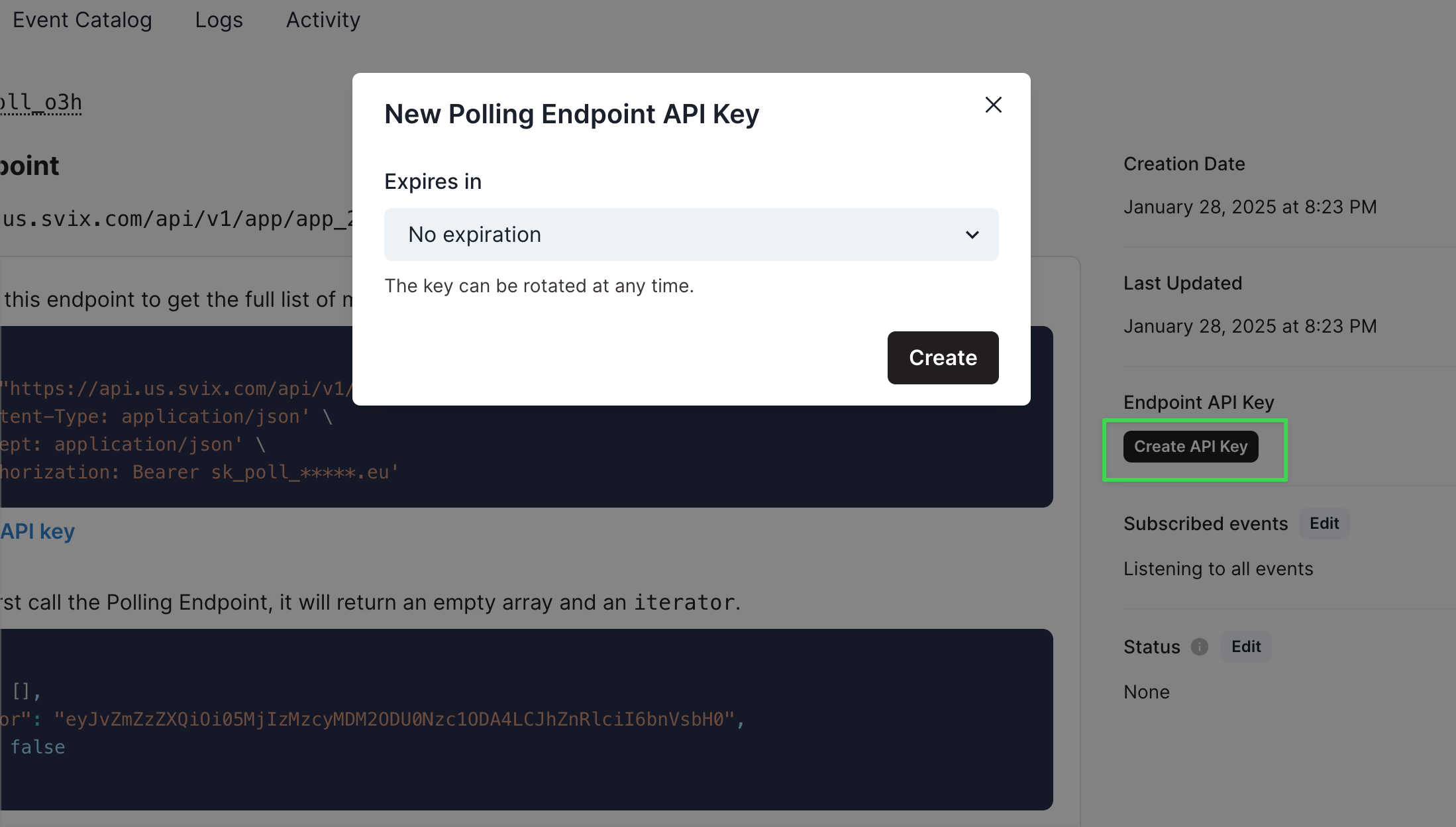Why use polling?
While webhooks are a great way to receive notification of events, there are situations where polling for events is preferred. For example, when testing locally it’s much easier to poll for events than exposing a public HTTP endpoint. Another example is if you don’t care about getting certain events in real-time and prefer getting them in a batch at the end of the day, you can use the polling endpoint to ingest event history when you’re ready.Both is goodConsider combining webhooks (pushing) and polling (pulling). You can, for example, use a webhook to act as a trigger to fetch from the polling endpoint. Or use the polling endpoint(s) periodically throughout the day to always have your events streamed in a first-in-first-out order (which is difficult to guarantee with webhooks.)
Create a polling endpoint
Start by creating an endpoint from the Webhooks page in your Straddle dashboard, only this time, select Polling Endpoint as the type.
Usage
Once you’ve created a Polling Endpoint, you’ll get a unique URL likehttps://api.svix.com/api/v1/app/app_2mG6DgUaGlwCNdM5oRCUJec2kQC/poller/poll_59q
You can call this endpoint directly once you have a polling API Key.
API Keys
To call the Polling Endpoint, you’ll need to create an endpoint-specific API key. Be sure to store this in a secure environment!
This API Key is only used to authenticate with the specific polling endpoint and is distinct from your Straddle-wide API keys